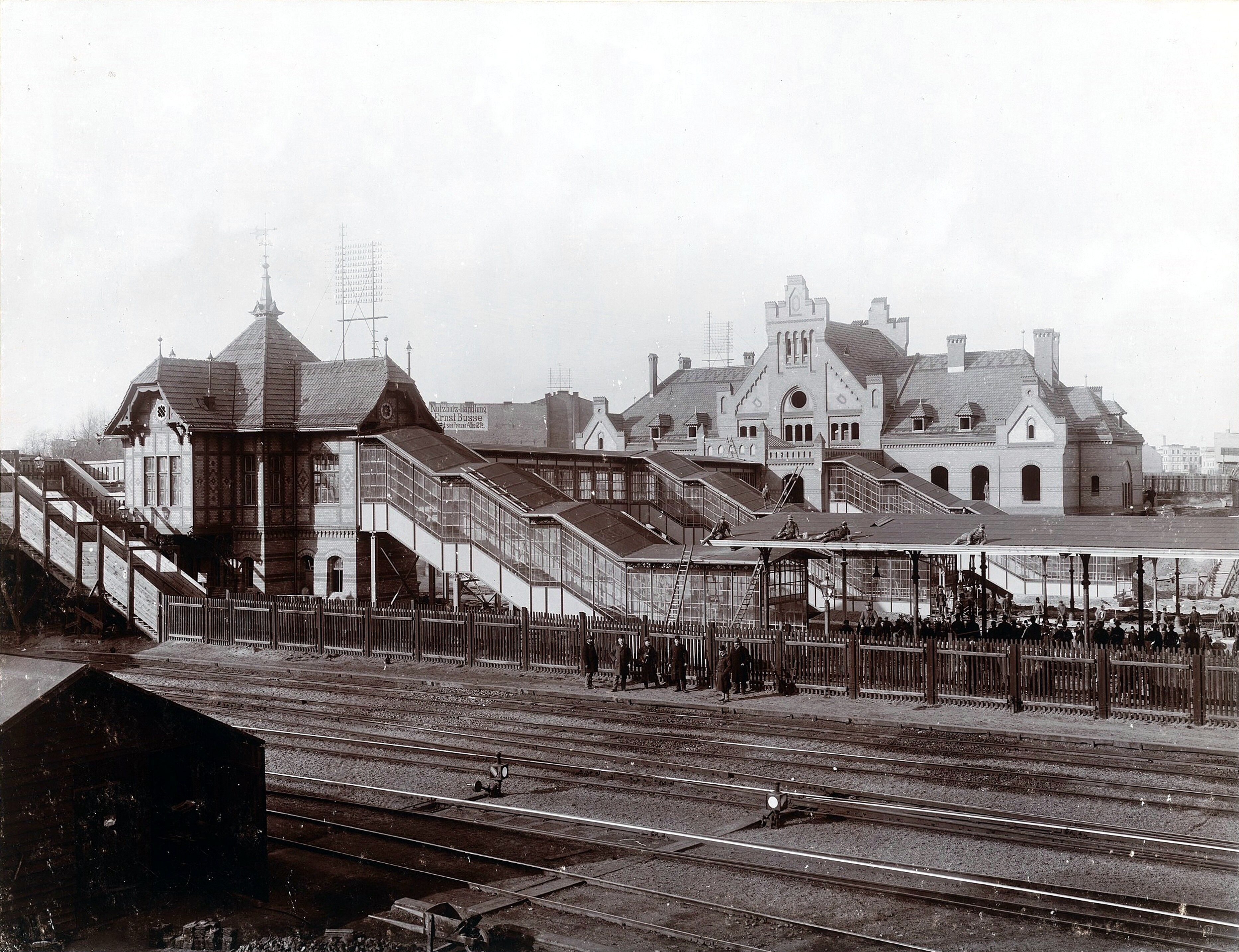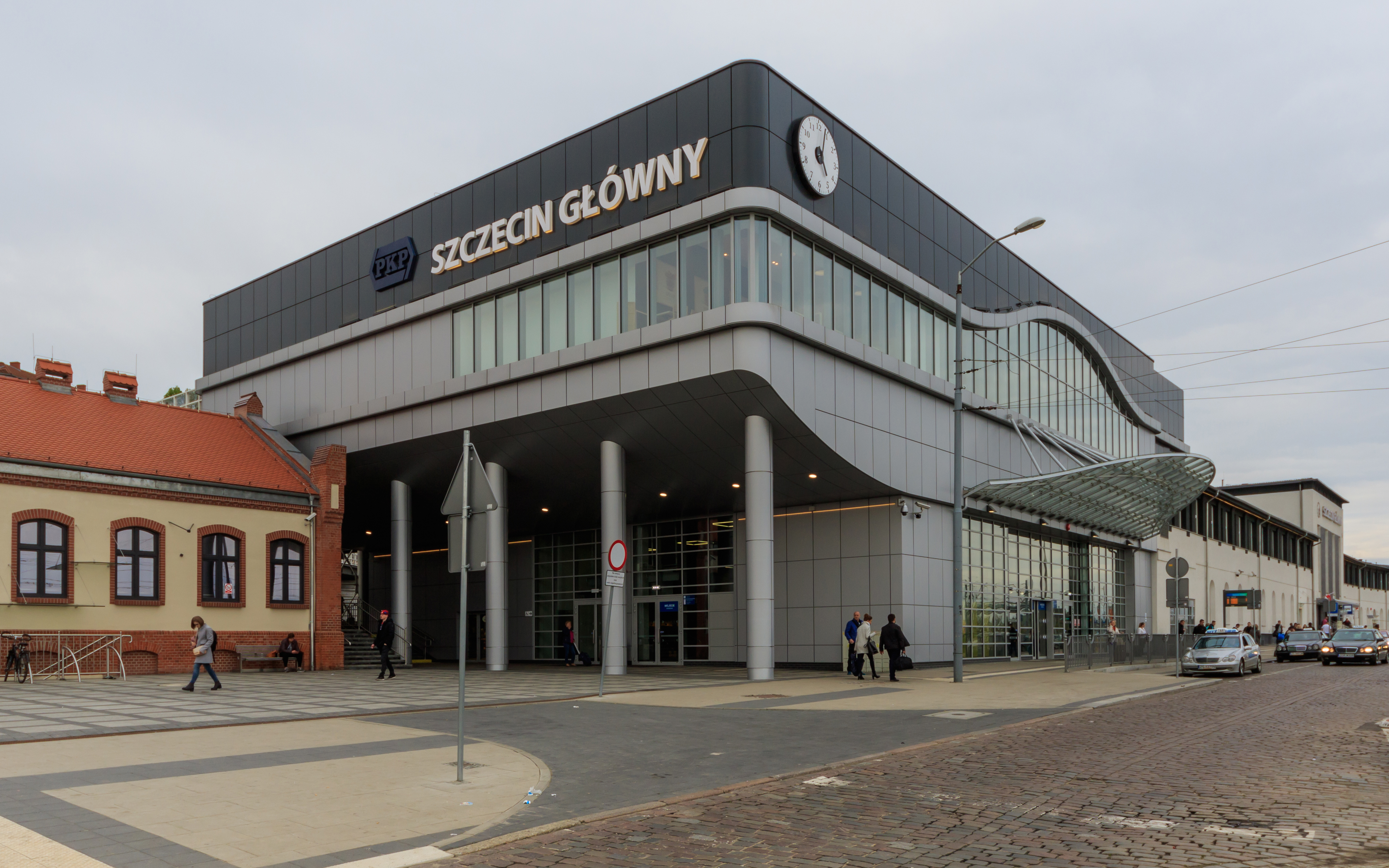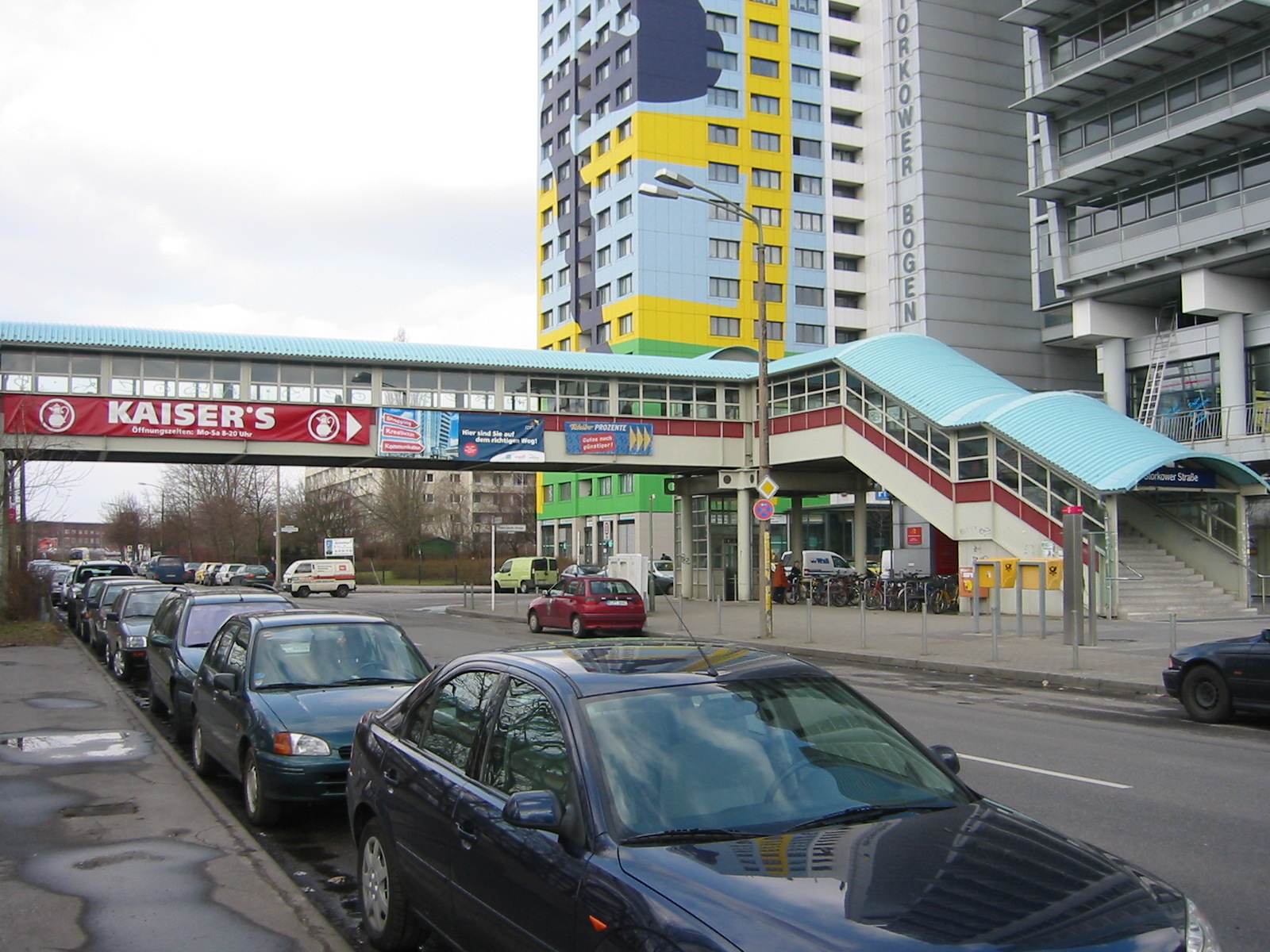|
Ringbahn
The Ringbahn (German for circle railway) is a long circle route around Berlin's inner city area, on the Berlin S-Bahn network. Its course is made up of a double-tracked S-Bahn ring and a parallel freight ring. The S-Bahn lines S41 and S42 provide a closed-loop continuous service without termini. Lines S45, S46 and S47 use a section of the southern and western ring, while lines S8 and S85 use sections of the eastern ring. The combined number of passengers is about 400,000 passengers a day. Due to its distinctive shape, the line is often referred to as the ''Hundekopf'' (Dog's Head). The Ringbahn is bisected by an east–west railway thoroughfare called the Stadtbahn (city railway), which crosses the Ringbahn from Westkreuz (Western Crossing) to Ostkreuz (Eastern Crossing), forming a Südring (Southern Ring) and a Nordring (Northern Ring). The north-south S-Bahn link (with the North-South S-Bahn-tunnel as its central point) divides the Ringbahn into a ''Westring'' (Western Ring) ... [...More Info...] [...Related Items...] OR: [Wikipedia] [Google] [Baidu] |
Ostkreuz
Berlin Ostkreuz station (german: Bahnhof Berlin Ostkreuz) (literally "Berlin East Cross") is a station on the Berlin S-Bahn suburban railway and the busiest interchange station in Berlin. It is in the former East Berlin district of Friedrichshain, now part of the Boroughs of Berlin, borough of Friedrichshain-Kreuzberg. A smaller part of the station is in Rummelsburg, part of the borough of Lichtenberg. The station is a ''Turmbahnhof'' ("tower station", i.e., a two-level interchange) with the Berlin–Wrocław railway, Berlin–Frankfurt (Oder) railway ("Lower Silesian–March Railway") and the Prussian Eastern Railway on the lower level and the Berlin Ringbahn on the upper level. It is used by a total of around 235,000 passengers every day on eight lines, entering or leaving. The station was completely reconstructed from 2006 to December 2018 while operations continued. In the past it was exclusively used as a Berlin S-Bahn station, but it is now also a stopping point for regional ... [...More Info...] [...Related Items...] OR: [Wikipedia] [Google] [Baidu] |
Berlin Frankfurter Allee–Berlin-Rummelsburg Railway
The Berlin Frankfurter Allee–Berlin-Rummelsburg railway is an electrified line in Berlin. It connects the Ringbahn with the Berlin-Betriebsbahnhof Rummelsburg station. Except for a short section, the line has two tracks. It was originally created as a freight line, but it is now used primarily used for the transfer of empty passenger trains that are maintained at the Rummelsburg depot. The track is also linked by a double-track line from the Ringbahn from the south to the Berlin-Lichtenberg station. Route The line branches to the east from the long-distance tracks of the Ringbahn at Berlin Frankfurter Allee junction, about 400 metres south of Frankfurter Allee station after the overpass over Gürtelstraße. From there to Rummelsburg, it runs exclusively on embankments, with a total of nine overpasses over roads, paths and two other railway lines. After about 600 metres, the line, which is elevated on a bridge over the Pfarrstraße, reaches the B1 signalbox at the west end of ... [...More Info...] [...Related Items...] OR: [Wikipedia] [Google] [Baidu] |
Berlin–Görlitz Railway
The Berlin–Görlitz railway is a main line railway in the German states of Berlin, Brandenburg and Saxony, which was originally built and operated by the Berlin-Görlitz Railway Company (''Berlin-Görlitzer Eisenbahn-Gesellschaft''). The line runs through Lusatia from Berlin via Cottbus to Görlitz. It is one of the oldest lines in Germany, opened in 1866 and 1867. It was nationalised in 1882 and became part of Prussian state railways. In 1920, it became part of German national railways along with the rest of the Prussian state railways. Route The line runs from Berlin via Königs Wusterhausen, Lübben, Cottbus, Spremberg, Weißwasser and Horka to Görlitz. The route originally began in Berlin from Görlitz station, a terminal station that was demolished in 1962. Today, the line starts at the Berlin Stadtbahn and the Ringbahn and passes through the southeastern landscapes of the Spreewald and Lower Lusatia to the railway junction of Görlitz. The line is double-tracked onl ... [...More Info...] [...Related Items...] OR: [Wikipedia] [Google] [Baidu] |
Berlin-Gesundbrunnen Station
Berlin Gesundbrunnen station (german: Bahnhof Berlin Gesundbrunnen) is a railway station Rail transport (also known as train transport) is a means of transport that transfers passengers and goods on wheeled vehicles running on rails, which are incorporated in tracks. In contrast to road transport, where the vehicles run on a pre ... in Berlin, Germany. It is situated in the Gesundbrunnen (Berlin), Gesundbrunnen district, part of the central Mitte borough, as an interconnection point between the northern ''Berlin Ringbahn, Ringbahn'' and ''Berlin Nord-Süd Tunnel, Nord-Süd Tunnel'' lines of the Berlin S-Bahn, as well as a regional and long distance station of the Deutsche Bahn network. The station is operated by the DB Station&Service subsidiary of Deutsche Bahn AG and is classified as a German railway station categories, Category 1 station, one of 21 in Germany and four in Berlin, the others being Berlin Hauptbahnhof, Berlin Südkreuz and Berlin Ostbahnhof. History When ... [...More Info...] [...Related Items...] OR: [Wikipedia] [Google] [Baidu] |
Berlin–Szczecin Railway
The Berlin–Szczecin railway, also known in German language, German as the Stettiner Bahn (Stettin Railway) is a mainline railway built by the ''Berlin-Stettin Railway Company'' between the German capital of Berlin and the now Poland, Polish city of Szczecin, then part of Prussia and known as Stettin. It is one of List of the first German railways to 1870, the oldest lines in Germany, built in 1842 and 1843 and was the company's trunk line. The line was duplicated between Berlin and Angermünde in 1863 and between Angermünde and Szczecin in 1873. The line is still used by regional trains on the Berlin–Angermünde route (some to or from Stralsund) and on the Angermünde–Szczecin route as well as the long-distance trains on the entire Berlin–Szczecin line. Between central Berlin and the suburban station of Bernau bei Berlin station, Bernau the line also has its own suburban tracks used by the Berlin S-Bahn. The line is also a major route for the transport of freight between G ... [...More Info...] [...Related Items...] OR: [Wikipedia] [Google] [Baidu] |
Berlin Stadtbahn
The Berlin Stadtbahn ("city railway") is a major railway thoroughfare in the German capital Berlin, which runs through Berlin from east to west. It connects the eastern district of Friedrichshain with Charlottenburg in the west via 11 intermediate stations including Hauptbahnhof. The Berlin Stadtbahn is often also defined as the slightly longer route between Ostkreuz and Westkreuz, although this is not technically correct. The line was originally built in the 1880s. It is in length, and is entirely elevated above the city's streets. The four track route carries S-Bahn, Regionalbahn, Regional-Express, Intercity, EuroCity and Intercity-Express trains. Operation Structure and tracks The Stadtbahn line is an elevated rail line with viaducts totalling in length and including 731 masonry viaduct arches. A further of the line are situated on 64 bridges, that cross adjoining streets and (three times) the River Spree. The remaining length of the line is on an embankment. The ... [...More Info...] [...Related Items...] OR: [Wikipedia] [Google] [Baidu] |
Berlin Schönhauser Allee Station
Berlin Schönhauser Allee is a railway station in the Prenzlauer Berg district of Berlin. It is located on the Berlin U-Bahn line and also on the Ringbahn (Berlin S-Bahn The Berlin S-Bahn () is a rapid transit railway system in and around Berlin, the capital city of Germany. It has been in operation under this name since December 1930, having been previously called the special tariff area ''Berliner Stadt-, Ring ...). Built in 1913 by A.Grenander opened as "Bahnhof Nordring". As the station was well accepted the roof was elongated in 1925 and a new entrance built. In 1936 the station was named "Schönhauser Allee". On an average day approximately 500 trains and more than 26000 people cross this station. At this station, the elevated U2 crosses the below-ground S-Bahn, while at the other crossing of the U2 and the Ringbahn, Messe-Nord/ICC S-Bahn station and Kaiserdamm U2 station, the U2 crosses S-Bahn below-ground on the bottom deck of a road bridge.Robert Schwandl: U-Bahn, S ... [...More Info...] [...Related Items...] OR: [Wikipedia] [Google] [Baidu] |
Berlin North–south Mainline
The Berlin North-South main line (German: ''Nord-Süd-Fernbahn''), also called the ''North-South link'' (''Nord-Süd-Verbindung'') is an electrified railway line in Berlin which was opened in 2006. It is an important component of the “mushroom concept” (Pilzkonzept) adopted for long-distance and regional rail services through the city. Its core is an approximately 3.5 km long Tiergarten tunnel under the Tiergarten in Berlin. The tunnel section includes the underground level of Berlin Hauptbahnhof (main station) and the Potsdamer Platz regional station. The above-ground section of the line includes the Berlin Südkreuz station. Route General The line is a four-track connection between the Ringbahn (''Ring line'') in the north of Berlin via the Berlin Hauptbahnhof to Südkreuz and the Anhalt Railway in the south. North of the Hauptbahnhof the line divides into two double-track lines. One of them runs east, the other west, both running on to the Ring line. The tunnel an ... [...More Info...] [...Related Items...] OR: [Wikipedia] [Google] [Baidu] |
Berlin Westhafen Station
Berlin Westhafen is a railway station, station in the Moabit district of Berlin. It is served by the Berlin S-Bahn, S-Bahn lines and and the Berlin U-Bahn, U-Bahn line . Overview The S-Bahn station was opened in 1898 under the name ''Putlitzstraße'', which is the street on which the station lies. Despite sustaining damage during the Second World War, the station remained in service. The U-Bahn station was opened on 28 August 1961, soon after the building of the Berlin Wall and also with the name ''Putlitzstraße'', although no direct interchange with the S-Bahn station existed. In 1980 the S-Bahn station lost its service owing to cessation of services on the Western part of the Berlin Ringbahn, Ringbahn (circle line). After the Wall fell, S-Bahn services were gradually reinstated. In 1992, the U-Bahn station was renamed ''Westhafen'' after the nearby Westhafen port and on its reopening on 19 December 1999, the S-Bahn station also assumed this name. Once one of the least-freque ... [...More Info...] [...Related Items...] OR: [Wikipedia] [Google] [Baidu] |
Berlin-Wedding Station
Berlin-Wedding is a railway station, station in the Wedding (Berlin), Wedding locality of Berlin and serves the Berlin S-Bahn, S-Bahn lines and and the Berlin U-Bahn, U-Bahn line . S-Bahn station Wedding S-Bahn station first opened on 1 May 1872. It is part of the Berlin Ringbahn, a circular line traversing many of the central districts of the city. The service, however, was disrupted in 1961 by the building of the Berlin Wall and Wedding S-Bahn station went out of use in 1980 after passenger numbers on the route fell to unsustainable levels. After the fall of the Berlin Wall, many disused S-Bahn routes were gradually reinstated. The section of line between the stations Berlin Westhafen railway station, Westhafen and Berlin Gesundbrunnen railway station, Gesundbrunnen, with Wedding as the only intermediate station, was the last of these to be reopened. This occurred on 16 June 2002, a date which was nicknamed Wedding-Day, a pun based on the clash of meanings of the word 'we ... [...More Info...] [...Related Items...] OR: [Wikipedia] [Google] [Baidu] |
Berlin Prenzlauer Allee Station
Prenzlauer Allee is a railway station in the Prenzlauer Berg neighbourhood of Berlin, named after the Prenzlauer Allee road. Situated on the Berlin Ringbahn, it is served by the S-Bahn lines , , and . The station is barrier-free. History The station was opened on 1 May 1892 where Prenzlauer Allee crosses the Ringbahn tracks at right angle. It consists of a platform for S-Bahn trains and a clinker brick style reception building, which was damaged in World War II. Unlike other reception buildings of nearby stations, it has been rebuilt in its original condition. Other services and connections The station can also be reached via the line of the Berlin tram network and by BVG bus line 156. References Prenzlauer Prenzlauer Allee Prenzlauer Allee is a major avenue in the Prenzlauer Berg district of the German capital Berlin and one of the main thoroughfares of the north-eastern Pankow borough. The arterial road connects the centre of former East Berlin at Alexanderplatz via ... ... [...More Info...] [...Related Items...] OR: [Wikipedia] [Google] [Baidu] |
Berlin Storkower Straße Station
Storkower Straße is a railway station in the Prenzlauer Berg locality of Berlin, close to the locality's border with Fennpfuhl. Located at the Ringbahn it is served by the S-Bahn lines , , and . History The station was opened in 1881 under the name of ''Zentralviehhof'', as the vast area south of the station then was the site of Berlin's central slaughterhouse A slaughterhouse, also called abattoir (), is a facility where animals are slaughtered to provide food. Slaughterhouses supply meat, which then becomes the responsibility of a packaging facility. Slaughterhouses that produce meat that is no ... that received animals by rail here. An over long pedestrian bridge (called the , i.e. "Long Misery") crossed the processing plant connecting the station with the Friedrichshain residential areas. The station was renamed in the 1970s, while in 1991 the slaughterhouse finally closed. The notorious bridge except for about above the tracks was demolished in 2002. The remain ... [...More Info...] [...Related Items...] OR: [Wikipedia] [Google] [Baidu] |






